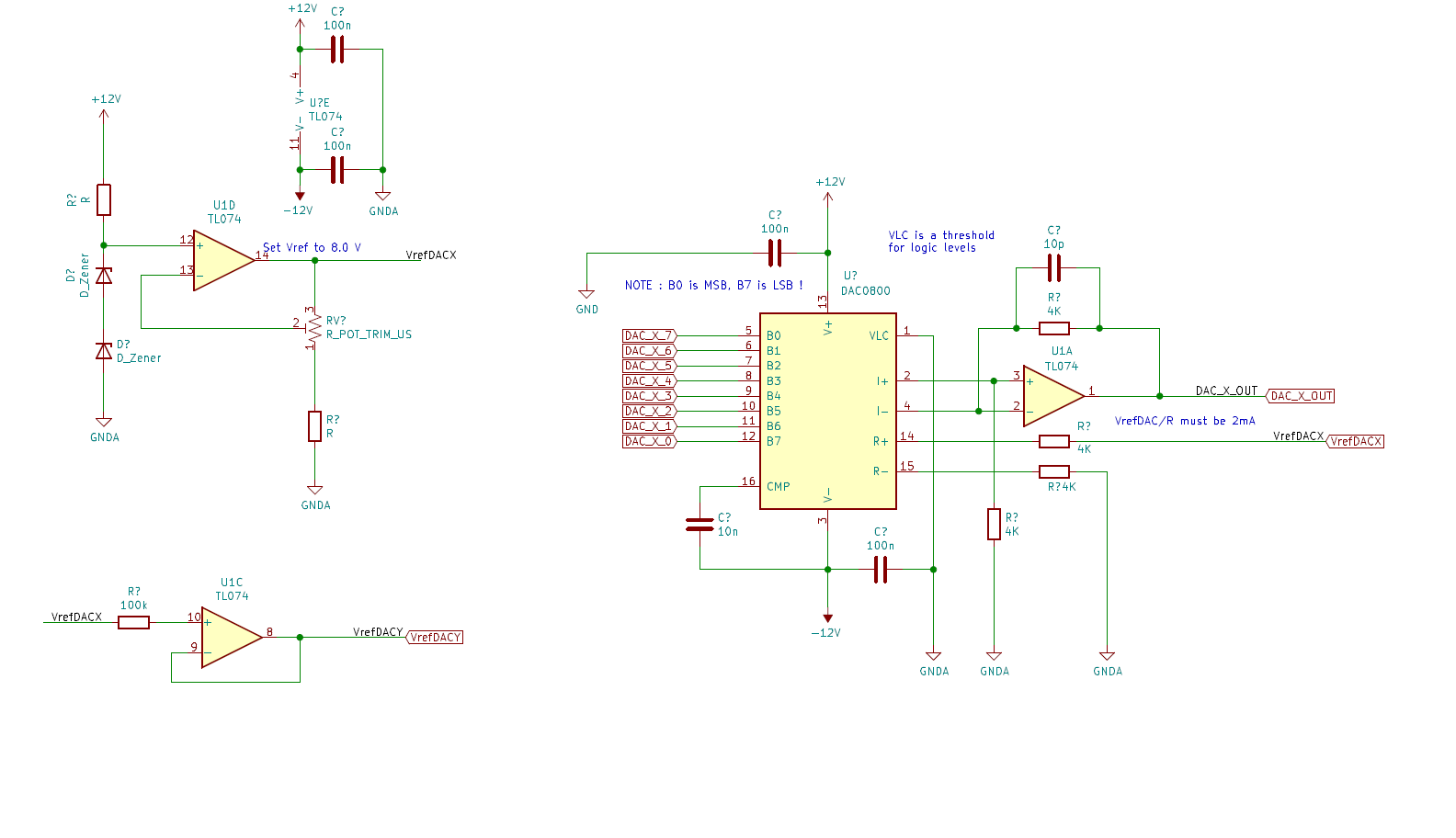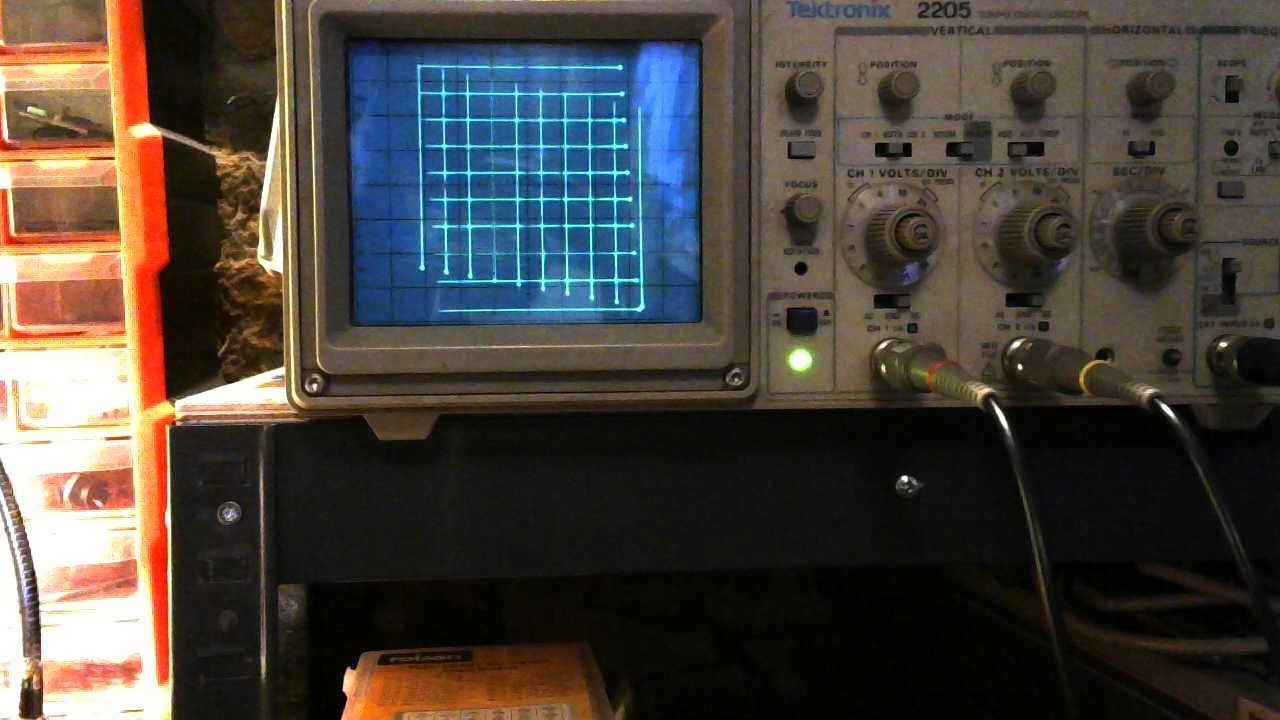Other Parts Discussed in Thread: STRIKE
Hi,
I am still playing around with that DAC0800 ( actually with good results ) however I have a small problem that I am not sure which one is the best way to fix it so before I try something I decided to post here.
So I am using the following circuit ( designed to have a swing between +8 and -8 V DC )
The "4K resistors" in reality are 2x 2K 1% resistors in series.
Now of course, tolerances and such, the output is NOT 100% symmetric, i.e. the output at code 00H is not precisely the negative of the code at FFH there's a small difference.
Question is, how do I make those two codes be PRECISELY ( or as much precise as possible ) close to be +Vref and -Vref ( and or I'd be even "ok" to be +Vref-err and -Vref-eff as long as they are as much symmetric as possible ) ?
Should I try by putting a trimmer in place of the R ( I should have named them sorry, let's call it Rf ) between pin 2 and 1 of the op-amp ( that should control the gain ) and/or in place of the R between pin 3 and GND of the op-am ( let's call it R1 ) that should also someway control the gain but also the "offset".
As an inverting amplifier the gain should be -Rf/R1 but I am guessing "even if I touch the gain that won't change the symmetry" ?
The problem this "missing symmetry" is causing me is visible in this next pic, after LOT of measuring and other tests I am 99% confident it's due the fact that when I move from +X/+Y to -X/-Y I don't return to the same place but there's a constant error that gets added up ( this because I am moving +/- in X with a constant step Y ).
To be honest the non-symmetry ( I should have checked in advance ) can be easily spotted measuring with a volt-meter directly at the DAC output and even just like that you see it's not perfectly balanced.
Anyway thanks in advance for any help.
Cheers.



